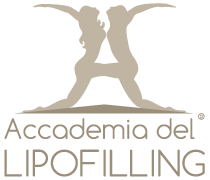The hidradenitis suppurativa is a chronic and recurrent dermatological disease, which can appear after puberty and usually affects the axillary area and / or the genito-femoral area; it has a prevalence of 1-6%, mainly affects women and has a negative impact on quality of life. The common therapies have always given unsatisfactory results, but recently it can propose more effective treatments, both medical and surgical.
It is an inflammatory and chronic disease of the skin where the first event seems to be the occlusion of the hair follicles of those areas, that resulting in inflammation, secondary involvement of the sweat glands, then fibrosis and finally scar reaction. Often associated to over- infectious events, due to local bacteria of skin or hair follicles. Among the various causes are genetic predisposing factors, given that family history is present in 25% of cases. The tendency to appear at puberty or after puberty suggests the possible involvement of hormones (androgens). Obesity seems to have a causative or pejorative role. Several studies have also shown that tobacco use is a risk factor for the development of this disease.
The clinical course can be staged with the classification of Hurley: the beginning is insidious with folliculitis, papules, pustules, persistent and recurrent localized (stage I), then gradually occur the appearance of nodules, plaques, abscesses, necrotic areas, fistulas, some scars (stage II), and the confluence of the lesions with sinus tracts and scars even more retractive and hypertrophic of varying degrees(stage III). Fistulas can also affect the deep tissues including muscle fascia and muscles.
As regards the treatment of the initial stages, they are indicated general antibiotics and anti-androgens in women; in stage II as in stage I, possibly in association with limited surgical excision of recurrent lesions; in stage III the indication is almost always surgical. There is a new class of biological drugs, often used in monotherapy, for the treatment of certain inflammatory diseases, such as hidradenitis suppurativa; the results has been significant in some cases, but only a long-term follow-up will be known clearly benefits and limitations. The important thing is always contact only health facilities or their affiliated, enabled to manage specific disease.
As it regards the surgical treatment is well established that, in order to obtain a reduced relapse rate, it is essential to perform a cancer-like removal of the affected areas. Among the different reconstructive techniques possible, the use of local perforator flaps is a good choice in functional and aesthetic terms. This is extremely confirmed when treated axillary skin folds of the breast region, xyphoid and groin.
In contrast, in the perineal, perianal and vulvar areas the complication rate of reconstructive techniques with flaps grows significantly, mainly because of the increased burdens tension wound, most of maceration and the proximity to the vulvar and anal orifices.
Therefore, the use of regenerative surgery techniques such as VAC (vacuum assisted closure) therapy, together or not with dermo-epidermal grafts, is a valid and promising alternative, particularly in patients who are not candidates to the preceding type of reconstructive technique. Although they are few published to date regarding items, the results seem interesting, especially in functional terms [1], [2]. The advantages consist in having no further morbidity caused by the surgery, having no donor sites; disadvantages consist of prolonged healing times, which in many cases can reach several months, with all the clinical and relational issues associated. In the future, when it will be available more case studies, it is always desirable to identify more clearly the precise details of the patients with advanced stages of hidradenitis suppurativa to medical treatment rather than surgical or regenerative.
Prof. Luca Vaienti; Dr. Andrea Marchesi
__________________________________________________________________________________________________
Bibliografia:
[1] Chen YE, Gerstle T, Verma K, Treiser MD, Kimball AB, Orgill DP. Management of hidradenitis suppurativa wounds with an internal vacuum-assisted closure device. Plast Reconstr Surg. 2014 Mar;133(3):370e-377e.
[2] Chen E1, Friedman HI. Management of regional hidradenitis suppurativa with vacuum-assisted closure and split thickness skin grafts. Ann Plast Surg. 2011 Oct;67(4):397-401.
